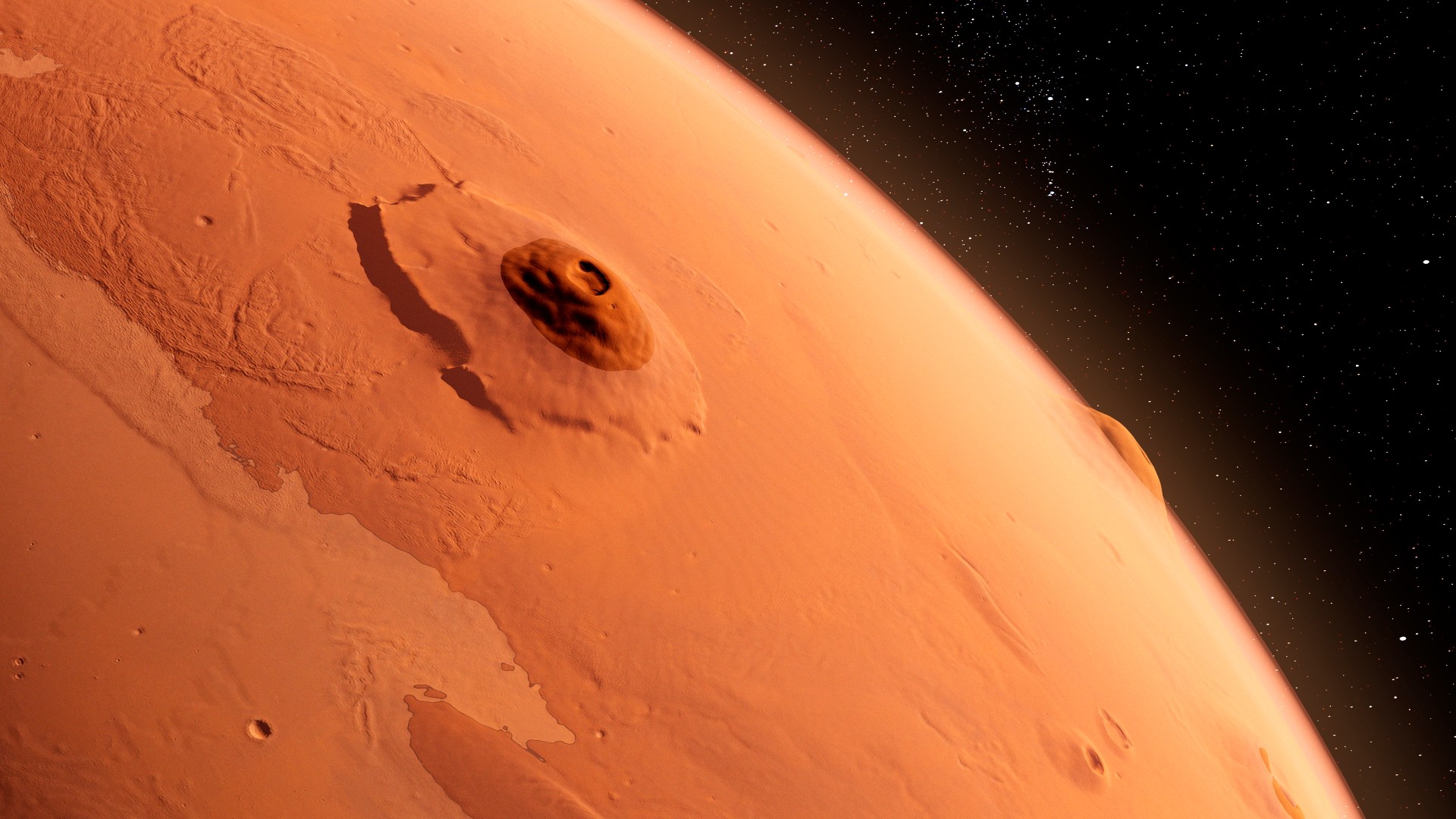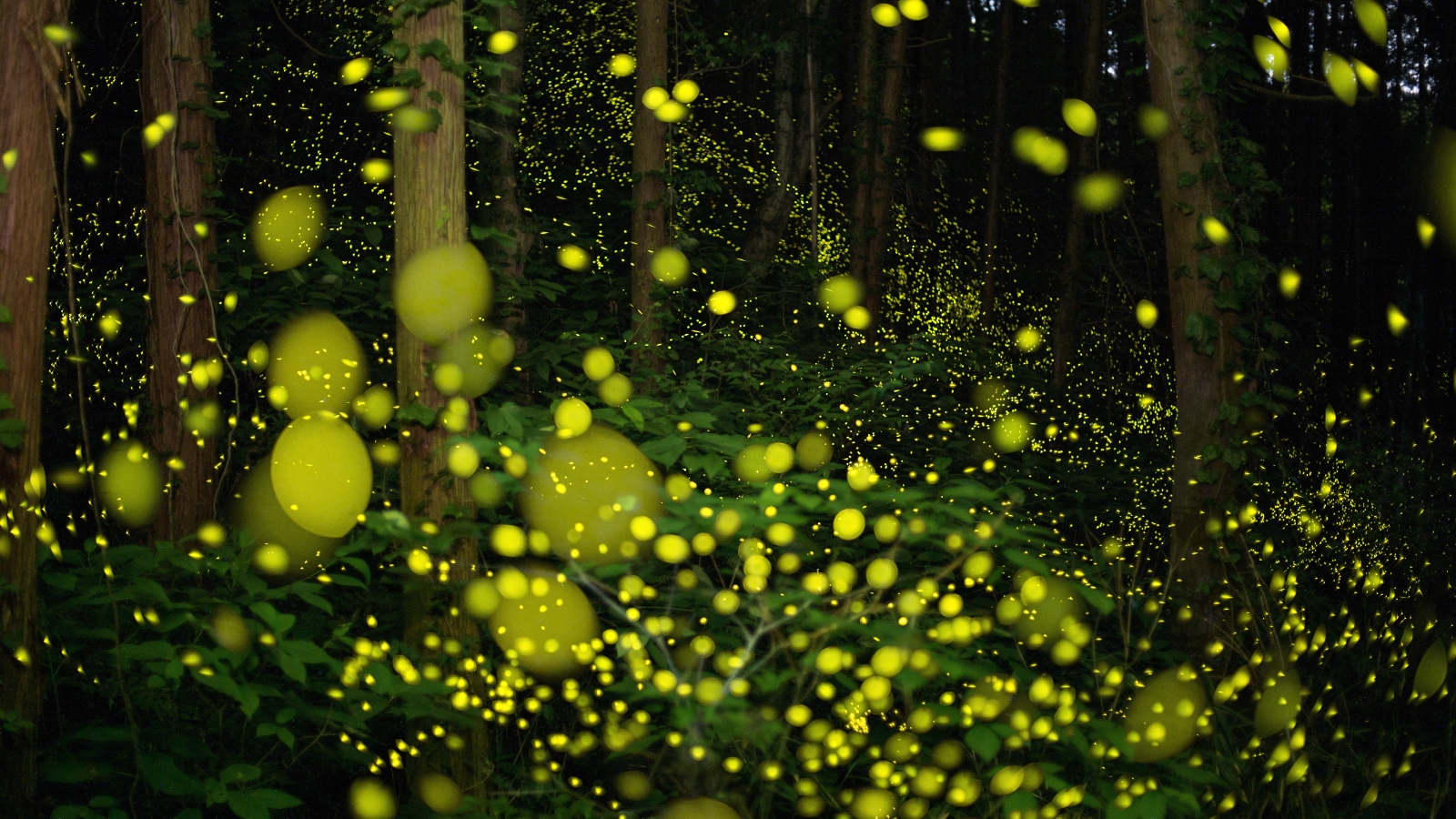'At least 150,000 tons' of water frost discovered atop Mars' tallest volcanoes
Once thought impossible to exist, water frost found atop Mars' Tharsis region volcanoes could come in handy for future human exploration missions, new research suggests.

Water frost has been spotted atop Mars' gargantuan equatorial volcanoes for the first time — defying previous beliefs that the presence of water there was impossible.
Scientists spotted a hair-thin dusting of frost atop the peaks of the volcanoes in the Tharsis region of the Red Planet — the largest mountains in the solar system, which tower up to three times the height of Mount Everest. In colder months, the frost could consist of up to 150,000 tons of water, or the equivalent of 60 Olympic swimming pools.
"We thought it was improbable for frost to form around Mars' equator, as the mix of sunshine and thin atmosphere keeps temperatures during the day relatively high at both the surface and mountaintop — unlike what we see on Earth, where you might expect to see frosty peaks," lead study author Adomas Valantinas, a postdoctoral fellow at Brown University, said in a statement.
The scientists discovered that the frost condenses along the summits of the mountains each night, before evaporating under the heat of the morning sun. The finding could be crucial for modeling water's existence on Mars that could aid in future human exploration missions. The researchers published their findings June 10 in the journal Nature Geoscience.
Related: In a 1st, NASA's Perseverance rover makes breathable oxygen on Mars
The frost was first spotted by the European Space Agency's Trace Gas Orbiter (TGO), which captured high-resolution color images during early morning . After analyzing 30,000 images snapped by the probe, the researchers confirmed the existence of the frost, an ethereal blue patina that forms in unique Martian microclimates from cool air wafting up to the peaks.
"What we're seeing may be a remnant of an ancient climate cycle on modern Mars, where you had precipitation and maybe even snowfall on these volcanoes in the past," Valantinas said.
Get the world’s most fascinating discoveries delivered straight to your inbox.
With the existence of the frost confirmed, Valantinas will continue studying the Martian environment — particularly ancient hydrothermal pools that could have supported microbial life. One day, samples from these vents could be brought to Earth for study by NASA's proposed Sample Return Mission.
Samples of Mars' dust, and even evidence of ancient life, could have already been collected by the Perseverance rover, which has been exploring Jezero crater since 2021. NASA initially planned for a retrieval mission to launch sometime in 2026, but this date has since been delayed until 2040 due to budget concerns. NASA is currently soliciting proposals from private companies to speed up the mission timeline.
"This notion of a second genesis, of life beyond Earth, has always fascinated me," Valantinas said.

Ben Turner is a U.K. based writer and editor at Live Science. He covers physics and astronomy, tech and climate change. He graduated from University College London with a degree in particle physics before training as a journalist. When he's not writing, Ben enjoys reading literature, playing the guitar and embarrassing himself with chess.


